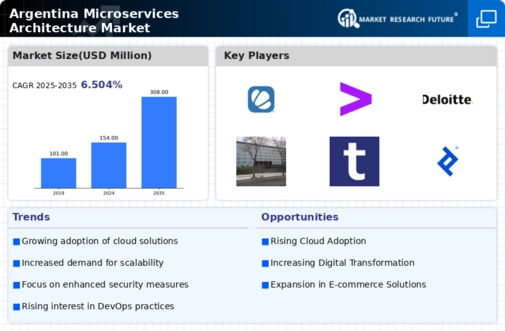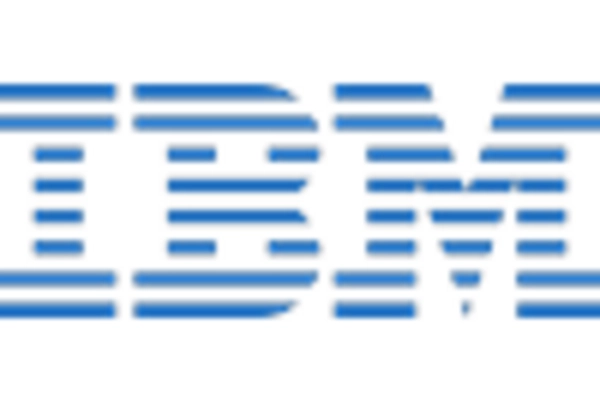Growing Demand for Scalability
The microservices architecture market in Argentina is experiencing a notable surge in demand for scalability solutions. As businesses increasingly seek to enhance their operational efficiency, the ability to scale applications seamlessly becomes paramount. This architecture allows organizations to deploy services independently, facilitating rapid scaling in response to fluctuating user demands. According to recent data, approximately 65% of companies in Argentina are prioritizing scalable solutions to accommodate their growth strategies. This trend indicates a shift towards more agile development practices, where microservices architecture plays a crucial role in enabling businesses to adapt quickly to market changes. The growing demand for scalability is likely to drive investments in microservices architecture, further solidifying its position in the market.
Increased Focus on Cost Efficiency
Cost efficiency remains a critical driver for the microservices architecture market in Argentina. Organizations are continually seeking ways to optimize their IT expenditures while maintaining high service quality. Microservices architecture enables businesses to reduce operational costs by allowing them to utilize resources more effectively and minimize downtime. Recent analyses indicate that companies adopting microservices can achieve up to a 30% reduction in operational costs compared to traditional architectures. This financial incentive is compelling for many Argentine firms, particularly in a competitive economic landscape. As cost efficiency becomes a priority, the microservices architecture market is likely to see increased adoption as businesses aim to streamline their operations and enhance profitability.
Rise of Digital Transformation Initiatives
In Argentina, the microservices architecture market is significantly influenced by the ongoing digital transformation initiatives across various sectors. Organizations are increasingly adopting digital technologies to enhance customer experiences and streamline operations. This transformation often necessitates a shift from monolithic applications to microservices, which offer greater flexibility and faster deployment times. Recent statistics suggest that around 70% of enterprises in Argentina are actively pursuing digital transformation strategies, thereby creating a fertile ground for the adoption of microservices architecture. As businesses strive to innovate and remain competitive, the microservices architecture market is poised for substantial growth, driven by the need for modernized IT infrastructures.
Enhanced Collaboration and Development Speed
The microservices architecture market in Argentina is also driven by the need for enhanced collaboration among development teams. This architectural style promotes a culture of collaboration by allowing teams to work on different services simultaneously without impacting the entire application. As organizations strive to accelerate their development cycles, microservices architecture facilitates faster deployment and iteration of applications. Recent surveys indicate that approximately 60% of software development teams in Argentina report improved collaboration and productivity when utilizing microservices. This trend suggests that the microservices architecture market will continue to expand as companies recognize the benefits of fostering a collaborative environment that enhances development speed.
Growing Importance of Customer-Centric Solutions
In the context of the microservices architecture market in Argentina, there is a growing emphasis on customer-centric solutions. Businesses are increasingly recognizing the need to tailor their services to meet the specific needs of their customers. Microservices architecture allows for the development of modular applications that can be easily customized and updated based on customer feedback. This adaptability is crucial in a rapidly changing market where customer preferences evolve quickly. Data indicates that around 75% of Argentine companies are prioritizing customer-centric approaches in their service delivery. As this trend continues, the microservices architecture market is likely to benefit from the demand for solutions that enhance customer satisfaction and engagement.

















Leave a Comment